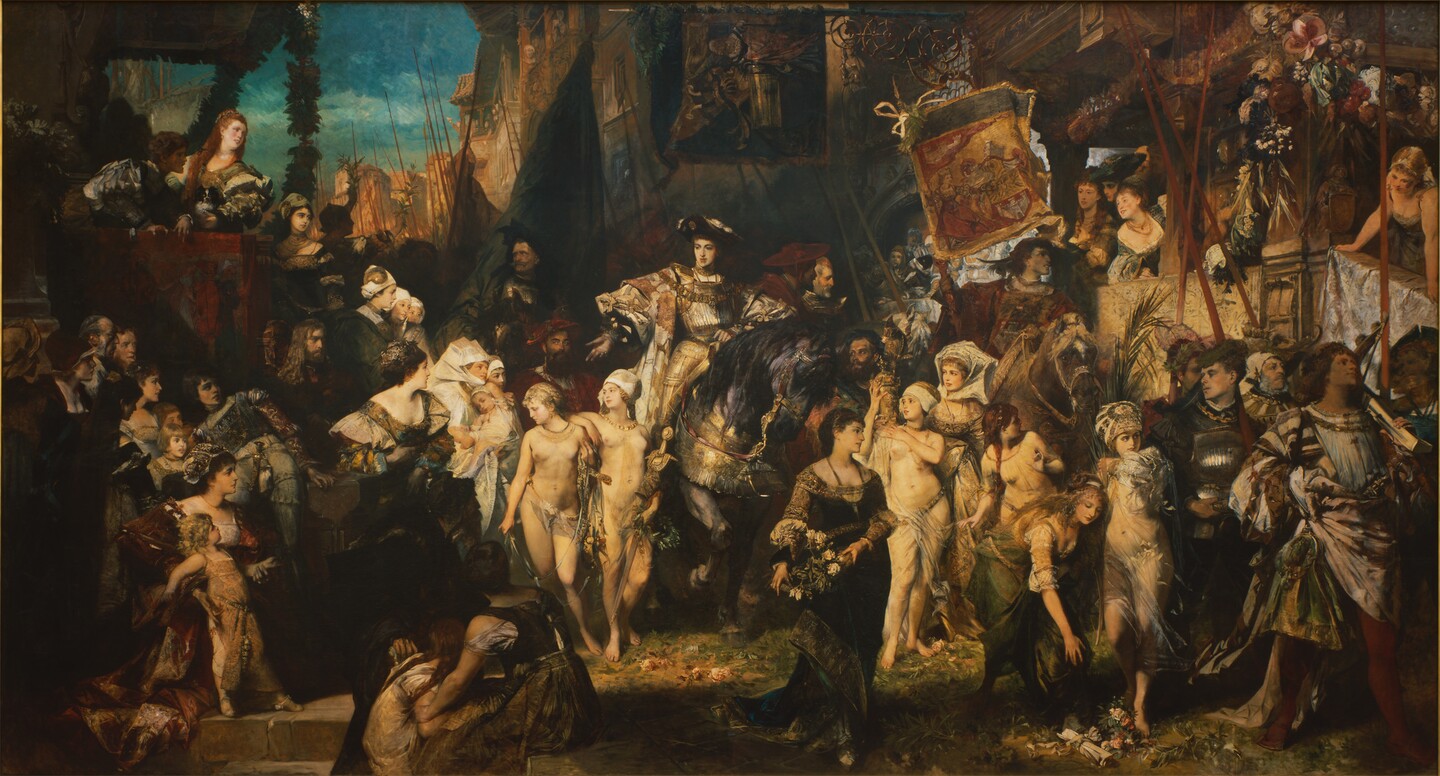Power?
»On 23 September 1520 the young Emperor Charles V arrives in Antwerp in a ceremonial procession. 358 years later, within just a few days 34,000 visitors flocked to the Wiener Künstlerhaus, where the historical painter Hans Makart was presenting his 50-square-metre monumental painting titled The Entry of Charles V into Antwerp. A sensational painting!
In which way exactly the Emperor had celebrated some centuries ago was considered to be of little importance. Historical paintings tend to embellish, exaggerate and glorify. Is that what power is about?
The sheer size of the painting and the multitude of figures make it impossible for us to capture the image as a whole. Soon our gaze is directed to the central figure: the emperor astride on a horse, staged with a grand and heroic aura, proceeds through a crowd of curious spectators – towering above them all. Here, it immediately becomes clear: one person’s power always implies the others’ powerlessness. Even we, as the audience today, inevitably look up to him. This is not any different now from back in 1878. And if we then take a look into the media today, we soon realize that here too real occurrences and processes are being symbolically charged and staged accordingly – of heads of governments, of people in protest and not least of ourselves, when we post images from our everyday lives in social media.
Jan Steinke (research assistant)
